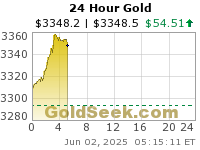Overview of The True Strength Index
by The TSI Trader
The True Strength Index (TSI) is an extremely responsive momentum indicator with very little lag time in its representation of price movement momentum. The indicator is designed so that when it is rising above zero, price is also rising. Also, when the indicator is falling below zero, price is also falling.
Perhaps this sounds too good to be true, but it is true!
Darn, just when we thought we found the Holy Grail to robbing the stock market for riches. There is always a catch, isn’t there?
Fortunately, there is a fairly decent workaround to answer the questions I raise. And that is the use of adding a moving average to the TSI indicator. One can use a crossover of the indicator with respect to the added moving average in cases where price direction is not a certainty.
So, for example, if the indicator is reading below zero, the only certainty is that price will go south if the indicator continues to fall. But if the indicator is rising below zero and has crossed up through its accompanying moving average that can be taken as a buy signal.
This chart will demonstrate what I have discussed. This is a daily chart of GDX. The TSI indicator is displayed in the panel below price and its color is purple. The blue line is the moving average of the TSI indicator. Here I have the TSI indicator set to 13,13. The moving average of the TSI indicator is set to 3.
I have drawn vertical white lines where the indicator begins to cross up through its moving average line and white lines where the indicator fails to rise further above the ZERO LINE. This chart is 6 weeks of daily price movement and you can see that the indicator accurately gave us 3 nice buy and sell signals.
Here is another look using the same TSI and moving average settings. This time the chart is of GLD in a 60 minute view, rather than a daily chart.
And we see that in the past 6 or 7 daily trading sessions the TSI gave us a couple of nice buy and sell signals (vertical white lines). These trades were kinda no-brainers because the rising TSI indicator was above ZERO the entire time – therefore we KNEW that price would be rising with it.
Also I will call to your attention the possible trade given us by our understanding of the Bollinger Bands. Buying on the break of the lower band (circled) and selling on a break of the upper band (also circled) would have worked out nicely. The timing of this trade would have been a tad different than the first TSI trade, but very similar.
By now the wheels in your brain should be spinning. What if a guy combined an understanding of the Bollinger Bands together with the True Strength Index? Like, use the two indicators together. One to confirm the other. Hummm…..
Now I will show you a second trading strategy using the True Strength Index. This strategy uses the concept of divergences. Normally, when price is rising, the TSI is also rising. And as the price goes higher, the TSI goes higher with it. But sometimes what happens is that as price makes a higher high, the TSI does not confirm the rally by make its own higher high. When this happens it raises a bright yellow flag for caution and inevitably a sell signal.
Here is an example of a divergence where price continued higher, but the TSI indicator did not follow higher. Instead, it forewarned of decreasing momentum that would not be able to continue sustaining higher and higher prices. This a daily chart of the S&P500. Notice how the TSI was screaming SELL for days before the May 2010 mini-crash occurred, by diverging from the climbing S&P500 price.
We have also learned the technique of using a moving average on the TSI to generate buy and sell signals. Notice how the purple TSI indicator crossed below the blue moving average (and stayed there) for almost 2 full weeks before the crash!
Now let’s look at another example of the True Strength Index where it gives us a SELL signal while price continues higher in divergence to the indicator.
This example is of daily SLV (silver). What is really interesting is that the TSI gave not one but two sell signals in the course of just a week or so. I have placed a white circle around price when it made a higher high while we see that TSI has made a lower high. Both these situations represented screaming SELL signals. Take a look. Notice how sharply SLV tries to correct the divergence.
But what about BUY signals? Well, the divergence concept works well for that, too.
*
What follows is an hourly chart of Hecla Mining (HL). Notice how price is trading flat for literally 4 days. But the TSI is does not believe things should be flat! Instead, with stealth, it is rising and rising, closer and closer to the ZERO cross over. When it does crossover price explodes to the upside. Remember, when the TSI is rising above ZERO, it is a mathematical certainty that price is also rising.





![[Most Recent Quotes from www.kitco.com]](http://www.kitconet.com/images/quotes_special.gif)



